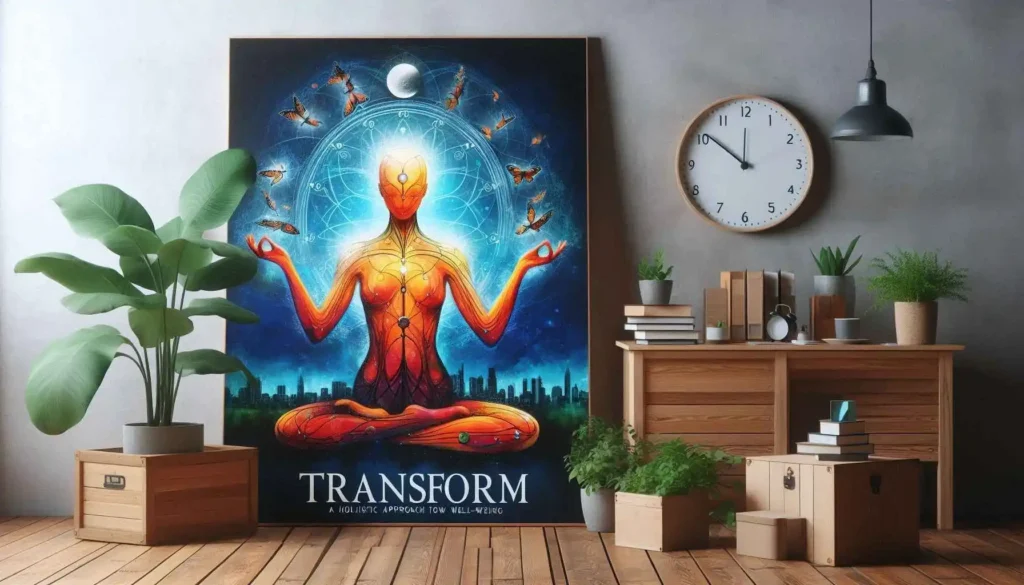
The MOVERS Technique: Cultivating Holistic Well-being Through Daily Practice
In the hustle and bustle of modern life, finding moments for self-care, reflection, and growth can feel like a luxury rather than a necessity. Yet, we know intuitively that neglecting our inner world and physical vessel eventually takes its toll. We yearn for clarity, peace, energy, and purpose, but often lack a structured approach to integrate these elements into our daily reality. This is where the MOVERS Technique comes in – a simple yet profound framework we can adopt to anchor ourselves and foster holistic well-being. In our fast-paced world, maintaining mental clarity and emotional balance is more essential than ever. The MOVERS technique offers a holistic approach to well-being, combining several practices such as Meditation, Ocean Breathing, Visualization, Exercise, Reading, and Scribing. By integrating these techniques thoughtfully into our daily routines, we can cultivate resilience, creativity, and inner peace. In this article, we will guide you through a structured plan to seamlessly incorporate these powerful methods into your life, enhancing overall health and productivity.
“The journey of a thousand miles begins with one step.” — Lao Tzu
The MOVERS Technique is an acronym representing six powerful daily practices: Meditation, Ocean Breathing, Visualization, Exercise, Reading, and Scribing. Individually powerful, when combined and practiced consistently, they create a synergistic effect that nourishes our minds, bodies, and spirits. We don’t just do these activities; we weave them into the fabric of our day, establishing a ritual that sets a positive tone and builds resilience.
Before we delve into each component, let’s consider the collective “why.” Why dedicate time each day to these specific activities?
The Cumulative Effects of the MOVERS Technique
Adopting a regular MOVERS practice brings about a multitude of positive effects that ripple through every area of our lives. We’ve seen and experienced how consistent application leads to tangible improvements:
Enhanced Mental Clarity and Focus: By calming the mind through meditation and breathing, and challenging it through reading and scribing, we sharpen our cognitive abilities.
Improved Emotional Regulation: Practices like meditation, ocean breathing, and scribing provide tools for processing emotions, reducing reactivity, and cultivating inner peace.
Increased Energy Levels: Exercise energizes the body, while the mental practices reduce stress, which is a major energy drain.
Greater Self-Awareness: Scribing and meditation encourage introspection, helping us understand our thoughts, feelings, and motivations.
Stress Reduction: The combination of calming techniques (Meditation, Ocean Breathing) and physical release (Exercise) is a powerful antidote to stress.
Personal Growth and Learning: Reading exposes us to new ideas and perspectives, while visualization and scribing help us define and move towards our goals.
Improved Physical Health: Exercise is fundamental to physical well-being, complementing the mental and emotional benefits.
Cultivated Discipline and Consistency: Committing to a daily routine builds self-discipline, which translates to other areas of life.
We understand that consistency is key. It’s not about perfection, but about showing up for ourselves each day, even if just for a short time. The synergistic power of MOVERS lies in its holistic nature; addressing mind, body, and spirit concurrently creates a foundation for thriving.
Deconstructing the MOVERS Acronym
Let’s break down each component and explore its role within the technique.
M: Meditation
Meditation is the practice of training our minds to be present. It’s not about stopping thoughts, but about observing them without judgment and cultivating a sense of calm awareness. Even a few minutes daily can make a profound difference. We might sit in silence, focus on our breath, or use a guided meditation. The goal is to create space between ourselves and our busy minds, finding stillness within.
Benefits of Daily Meditation:
Reduces feelings of anxiety and depression.
Improves concentration and attention span.
Enhances self-awareness.
Promotes emotional health.
Can improve sleep quality.
O: Ocean Breathing (Ujjayi Pranayama)
Ocean Breathing, also known as Ujjayi breath, is a specific type of diaphragmatic breathing where we gently constrict the back of the throat, creating a soft, ocean-like sound on both the inhale and exhale. We breathe in and out through the nose. This controlled breath is calming, warming, and helps to focus the mind. It’s often used in yoga practices and serves as a bridge between meditation and other activities.
How to Practice Ocean Breathing:
Sit comfortably with a straight spine.
Close your eyes and relax your jaw.
Take a deep inhale through your nose.
On the exhale, gently constrict the back of your throat (as if whispering “ahh” with your mouth closed) and exhale slowly through your nose, creating a soft sound.
Repeat on the inhale, again constricting the throat slightly to create a sound.
Continue for several minutes, focusing on the sound and the rhythm of your breath.
V: Visualization
Visualization is the practice of creating vivid mental images of our desired outcomes, goals, or even just a feeling of peace and success. By mentally rehearsing positive scenarios, we train our brains to recognize opportunities, build confidence, and align our actions with our aspirations. We might visualize our goals realized, ourselves handling challenges calmly, or simply feeling happy and healthy.
Elements to Visualize:
Achieving specific goals (career, health, relationships).
Overcoming challenges successfully.
Feeling desired emotions (joy, confidence, peace).
Your ideal self and lifestyle.
Positive interactions with others.
E: Exercise
Moving our bodies is non-negotiable for overall well-being. Exercise releases endorphins, improves cardiovascular health, builds strength, and reduces stress. The “E” in MOVERS doesn’t necessarily mean an intense gym session every day. It could be a brisk walk, yoga, dancing, stretching, or whatever movement we enjoy. The key is consistent physical activity.
Importance of Daily Exercise:
Improves mood and reduces symptoms of depression/anxiety.
Boosts energy levels.
Helps manage weight.
Strengthens muscles and bones.
Improves sleep.
R: Reading
Reading is fuel for the mind. Whether it’s non-fiction for learning, inspirational texts for motivation, or even fiction to expand our perspective and creativity, daily reading keeps our brains active and introduces us to new ideas and knowledge. We commit to reading something meaningful, something that adds value to our growth.
Types of Reading for MOVERS:
Self-help or personal development books.
Biographies of inspiring individuals.
Educational material related to our interests or work.
Philosophy or spiritual texts.
High-quality literature.
S: Scribing
Scribing, or journaling/writing, is a powerful tool for self-reflection, clarity, and processing thoughts and emotions. Putting our thoughts onto paper helps us externalize them, gain perspective, identify patterns, and track our progress. We can write about our feelings, gratitudes, insights from reading, goals, or anything that comes to mind. It’s a conversation with ourselves.
Benefits of Daily Scribing:
Reduces stress and anxiety.
Improves problem-solving abilities.
Enhances self-awareness.
Boosts memory and comprehension (especially after reading).
Provides a record of personal growth.
Building a Daily MOVERS Routine
Integrating all these components into a daily routine requires intention and flexibility. We find what works best for our schedule, but a common approach is to structure the morning or evening around these practices. A morning routine is particularly powerful as it sets a positive and proactive tone for the day.
Here is a sample MOVERS daily routine structure we might consider:
| Time Block | Activity | Duration (Sample) | Purpose/Benefit |
| 5:30 AM | Wake Up & Hydrate | – | Prepare the body |
| 5:40 AM | Meditation | 10 – 15 minutes | Calm the mind, cultivate presence |
| 5:55 AM | Ocean Breathing | 5 – 10 minutes | Gentle warm-up, focus breath, energize subtly |
| 6:05 AM | Visualization | 5 – 10 minutes | Set intentions, align with goals, build confidence |
| 6:15 AM | Exercise | 20 – 30 minutes | Energize the body, release tension |
| 6:45 AM | Reading | 15 – 20 minutes | Learn, gain perspective, stimulate intellect |
| 7:05 AM | Scribing | 10 – 15 minutes | Process thoughts, reflect, plan, express gratitude |
| 7:20 AM | Prepare for the Day/Work | – | Transition smoothly |
Note: Durations are flexible and can be adjusted based on individual schedules and time availability. The key is consistency, even with shorter durations.
We acknowledge that life happens, and sometimes a full MOVERS routine isn’t possible. On those days, we might choose just one or two components, or shorten the durations significantly. The important thing is not to break the chain entirely, but to maintain momentum. Five minutes of meditation is better than none. Ten minutes of reading is better than none.
Tips for Success





